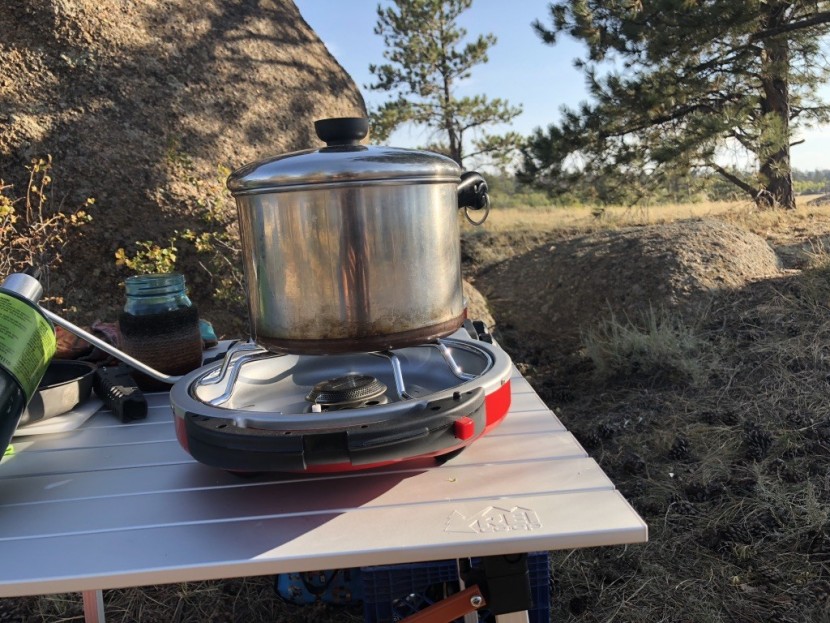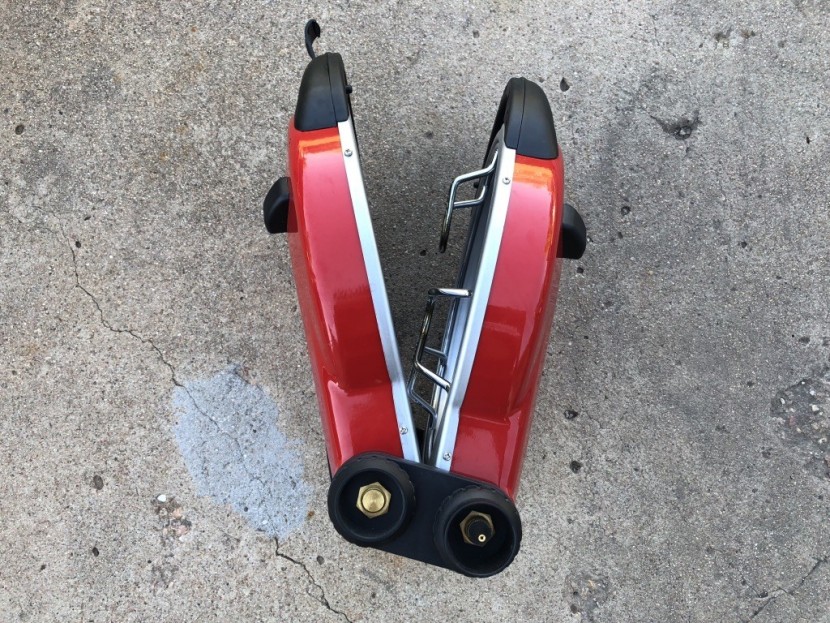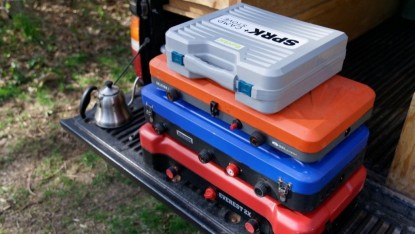Coleman Fold N Go Review
Our Verdict
Our Analysis and Test Results
We had high hopes for the Fold N Go, but it simply didn't stack up when put through our rigorous testing process. It can get most jobs done decently, and the price point is alright, but when compared to other options available, this one isn't anywhere near our first choice.
Time to Boil
This stove had the slowest time for boiling water of all the models in our review. On a sunny day with zero wind, the Fold N Go took a full seven minutes to boil a quart of water. Even stoves with fewer BTUs boiled faster than that. We think the issue lies in the fact that the cooking grates sit too high above the flames. Combine that with only having 10,000 BTUs per burner, and you just don't get a stellar performance.
Wind Resistance
This is where the Fold N Go struggles the most. With no windscreen and the cooking grate sitting too far above the burners, wind transforms what could be an adequate stove into a barely-functioning one. In our box fan test where we boiled water with a fan pointed at the burners, we gave up after 25 minutes because the water wasn't even pre-boiling. And out in the field on a breezy morning, we had to switch stoves while cooking breakfast in order to finish. Our food was barely getting hot even after cooking for more than 10 minutes.
Simmering Ability
On our first dinner field testing session, we were impressed by this stove's simmering ability — we perfectly caramelized onions, made rice, and prepared a big pot of slow-cooked curry without a hitch. On an essentially windless night, simmering was great. Come the next morning, though, there was a steady breeze in the air, and we couldn't get a proper simmer at all. Even with the burners turned up high, our sweet potatoes stayed lukewarm and raw until we switched to another stove. Bottom line: if you are cooking with zero movement in the air, the Fold N Go can simmer well, but if wind crops up, so will problems.
Ease of Set Up
Set up is relatively simple with this model, though it does require an extra step from the other folding model in our review, the Genesis Basecamp. For the Fold N Go to be packed away, one of the cooking grates must be removed and flipped upside down (and you don't want to do this if it's still hot). To set up, you flip it back over, squeeze the edges, and attach it to the stove body. Not a big deal, but an extra step nonetheless. We do like the fuel adaptor — it's easy to connect because the threads are fully exposed instead of recessed and hidden inside the stove body, as on most traditional models.
Ease of Care
This is about as easy a stove to clean as any. Just remove the grates to get to the stove body and scrub away. We do, however, feel that packing this up is a bit tedious. Besides having to flip a grate over, you need to make sure that the two sides are perfectly in line before folding them up — otherwise, it hinges improperly, and you can't close the latch on the handles. Furthermore, the latch is flimsy and, if you squeeze the handles together too tightly, it just pops open during transport. The fuel regulator can nest inside with the burners, but you have to search around for just the right spot, or it won't all Tetris together. All minor inconveniences to be sure, but it adds up to a less streamlined experience than other, better-conceived models.
Portability
The Fold N Go is more portable than a traditionally shaped two-burner. It only weighs 8 pounds and packs down to 13.75 x 12.25 x 5.25 inches. However, it's a bit of an awkward shape and doesn't stack into a kitchen box or crate very easily.
Value
The Fold N Go retails at a decent price, but it's still a bit steep when you consider its significant performance issues. We can't recommend this stove whole-heartedly when there are other options at comparable prices that perform far better.
Conclusion
While the overall concept of the Fold N Go is fun and it's sufficient for uncomplicated weather, overall, this stove has enough quirks that we think your money is better spent elsewhere.













